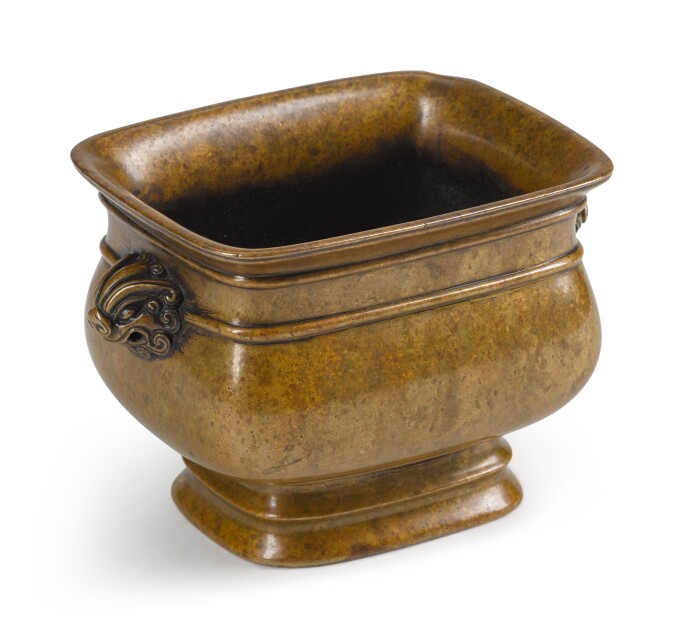1. The Origin of Censers
Censers have their origins in the tripod vessels of Neolithic pottery. The earliest examples in bronze date from the Shang (c. 1600- 1046 BC) and Western Zhou (c. 1045-771 BC) periods and were used as ritual and sacrificial vessels as well as cauldrons for cooking. By the Song dynasty (960-1279) censers had made their way into the scholar’s studio. In this setting, censers were used as incense burners - a sensory accoutrement and source of inspiration for the Chinese scholar’s artistic and literary pursuits.
2. Changing Shapes
During the Ming dynasty (1368-1644) archaic bronzes had a huge impact on popular culture, their connoisseurship a social requirement of education and good taste. To meet the demands in the market, new censers attempting to mimic these bronze age forms were produced. This period saw the refinement of bronze shapes and the elevation of the globular tripod censer into one of the most revered shapes of all Chinese bronzes. Alongside these more traditional forms, censers were also cast in a variety of shapes and sizes including stylised lobed forms and naturalistically cast peach-shaped vessels.
3. The Making of a Censer
The earliest Chinese bronzes were made by piece-mould casting, a process that first involved modelling the bronze in clay. When this dried further clay would be pressed around it to form a negative impression. These clay impressions would then be removed in sections, fired and reassembled to form the mould. If casting a vessel, the original model would also have to be reduced to form a core, the discrepancy in size dictating the thickness of the bronze. This highly laborious technique was later replaced with the cire-perdue process in which bronzes were moulded in wax. The wax model would be coated in the mould material and the wax then displaced by the pouring in of molten bronze. Only once the metal had cooled could the mould be broken away to show the final, unique form.
4. A Question of Weight
The weight of the censer closely relates to its material, production and usage. Whilst censers used for ritual purposes would seek to impart ceremonial gravitas through their size, the incorporation of censers into all aspects of life including in secular contexts called for the creation of lighter, smaller and even portable vessels such as personal handwarmers for the depths of winter.
5. Makers Mark
Xuande reign marks proliferate on bronze censers but many of these are apocryphal. The Xuande Emperor (1425-1435) was a great patron of Vajrayana Buddhism, commissioning the production of thousands of exquisite ritual and religious bronzes for the altars and halls of the newly constructed Forbidden City as well as to present to Tibetan emissaries. His ten-year reign is considered the peak of Chinese bronze production and the Xuande reign mark’s continued employment gives an insight into the reverence towards the wares he produced.
6. Handles Required
From simple loop shapes to rope-like twists and sculptural animal forms, handles have been a constant feature of Chinese censer design. A turning point was the advent of censer covers, which from at least the Han dynasty, lead the handles to also be cast on the shoulders of the vessel.
7. Crafted and Natural Patinas
A creative outlet for both craftsmen and collectors, the patina is a means of showing refinement and personality. The most sought-after patina was one that naturally develops over time. During the Xuande period, to imitate these ancient patinas, a fashion also emerged for chemically-treating the surface of the bronze after casting. The surface colours produced ranged from russet hues and tea-brown to gunmetal grey and surfaces mottled with greens and blacks. These grounds provided the perfect surface for further embellishment, including abstract gold splashes, a stylistic choice that may well have its origins in the creative splashed decoration on Song dynasty ceramics, and inlaid silver designs.




